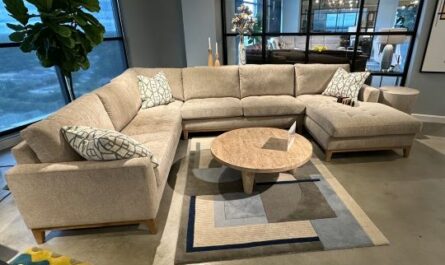WASHINGTON, D.C. — The U.S. Consumer Product Safety Commission today published a massive proposed safety standard for clothing storage units that aims to prevent tip-overs that have resulted in injury and death to children and adults.
The 1,100-page document, which has been in development for several years, can be seen here. The industry has 75 days, or until April 19, to respond. At that point, the CPSC will consider all comments and input regarding the standard.
The rule potentially has major implications for retailers, importers and manufacturers that sell dressers, chests and other clothing storage units moving forward. This is largely due to an extremely complex testing methodology outlined in the report that could be both difficult to pass or prove extremely costly for some bedroom resources that could have to significantly re-engineer products.
The standard is in response to the CPSC’s determination that there is an unreasonable risk of injury or death, particularly with clothing storage units (CSU’s) tipping over. The new standard would address this risk and the stability of dressers, chests and nightstands above 27 inches, requiring them not only to be tested for stability but also to exceed the minimum stability requirements.
The products also would have to be marked and labeled with safety information and bear a hang-tag providing performance and technical information or data about the stability of the unit in question.
The standard has been in development for several years dating back to a CPSC advance notice of proposed rulemaking in November 2017 that aimed to address the risk of injury or death associated with tip-overs involving clothing storage units.
Since January 1, 2000 and March 31, 2021, there have been 40 recalls that address tip-over hazards involving clothing storage units. These products, the CPSC said, were responsible for 328 tip-over incidents including reports of 149 injuries and 12 fatalities. The recalls, the CPSC said, involved 34 companies and more than 21.5 million clothing storage units.
In response to the CPSC standard, the American Home Furnishings Alliance said it and member companies support a mandatory furniture stability standard to help prevent tip-overs. It said a voluntary standard was developed in 2000 and that it has been updated five times since then “in response to emerging product trends and changing consumer behavior.”
“In 22 years, only one incident is known to have involved furniture that the manufacturer said complied with the voluntary standard,” said AHFA CEO Andy Counts.
However, he noted, injuries and deaths due to non-compliant units have persisted. Therefore, AHFA and its member companies “favor a mandatory federal rule that holds all manufacturers and importers to the same rigorous safety standard.”
“While we applaud the CPSC’s commitment to a mandatory furniture stability standard, AHFA believes the direction the agency has taken in its proposed rulemaking creates an ambiguous testing protocol that would be unenforceable,” Counts said.
“Further, CPSC’s estimates of the rule’s compliance costs are dramatically understated,” Counts added. “Actual costs for product redesign, testing, reinforced packaging and transportation will force many companies specializing in entry-level products out of the market. This will leave parents who are on a limited budget with few options. AHFA opposes any standard that makes safety a luxury only certain families can afford.”
The AHFA in its response added that the proposed CPSC furniture hangtag shows a tip rating number between 1 and 5 that is the sum of the unit’s “tip moment” up to a “threshold tip moment.”
“Unlike savings on your electric or gas, these ‘tip moments’ are not familiar concepts for consumers,” Counts noted, adding that AHFA members have tested thousands of clothing storage units in many styles and price points, using the methods prescribed in the CPSC’s proposed rule.
However, AHFA said that while all tested units complied with the current voluntary standard, none had met the CPSC’s minimum ‘tip rating number’ without modifications. This included units with a drawer interlock system similar to a file cabinet that required some modifications to reach a minimum tip rating of 1.0.
Others without interlocking drawers, AHFA noted, required “significant design modifications” to reach the minimum tip rating.
AHFA said that various ambiguities in the proposed rule “will result in years of debate and indecision.”
“Meanwhile, furniture that fails to comply with the current voluntary standard will continue to be produced and marketed to American consumers,” Counts said.
AHFA said it will outline its concerns with the proposed rule in formal comments that it will submit within the 75-day comment period.





